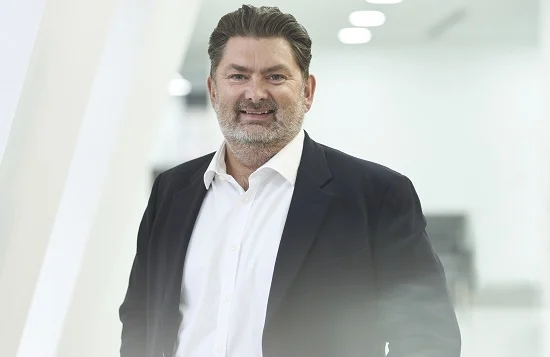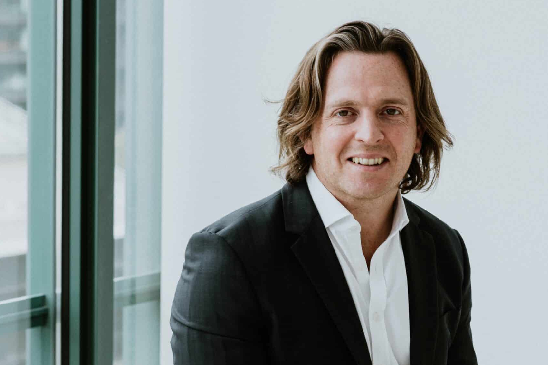
The London-based proprietary trading and training firm is looking to new opportunities in educational technology
Building a financial career as a proprietary trader is no longer restricted the world’s major financial centres, or to people from narrow socio-economic and educational backgrounds who live within commuting distance of a physical exchange.
This is the vision of OSTC, a derivatives trading and education firm based in Greater London, which is on a mission to identify traders who have strong potential but little or no experience, and transform them into profitable, high-volume market participants.
“We very much believe that in the modern age, in the fourth industrial revolution, finance is no longer the preserve purely of the major hubs of London, New York and Tokyo, that in fact you can trade Japanese government bonds from your mobile phone on a beach in Kenya,” said chief executive officer Lee Hodgkinson in an interview with Global Investor.
“If you go to university in Gdansk and once you’ve graduated if you want a job in finance, broadly speaking you have to leave the country, you’ve got to go to Frankfurt or to London.
“What we do is seek out talented and ambitious people, largely in emerging markets, and create an opportunity for them to be plugged into the capital markets of the world. And in doing that we are creating value for them, we’re creating value for us, we’re creating value for the local economy, the exchanges and our service partners.”
Hodgkinson, who was CEO of Euronext London, started his career at the London Stock Exchange, and is a former CEO of SmartPool, NYSE Euronext’s European dark pool joint venture with JP Morgan, HSBC and BNP Paribas. He also led the European and Asian sales and client divisions of the LIFFE and NYSE Euronext businesses.
Hodgkinson joined OSTC as CEO in April 2018 on what he describes as the cusp of Mifid II regulation, setting himself the task of transitioning the company, which was 15 years old at the time, into an elevated, next-level business.
OSTC in its current form emerged in 2005 when founding company On Screen Trading merged with Trading Connections. In the same year, OSTC opened an office in Warsaw, followed in 2009 by a Swansea office, a joint venture with Kondor.
In 2011, the company established a presence in Brighton and Mumbai, and two years later expanded into Russia, where it is a majority owner of a joint venture with investment company Aton. A China office followed two years later in partnership with Chinese broker Yongan Futures.
OSTC now operates 12 offices across six countries, including five in Poland and one in Spain, has a workforce of 480 and last year traded 110 million lots across 126 products and 21 exchanges.
Hodgkinson is wary of what he calls the celebrity CEO culture.
“Fundamentally no CEO can be successful alone,” he said. “Strategy is meaningless without execution, and to execute you need a very powerful and committed team. Leadership is more about inspiring a collective to achieve beyond their individual capabilities.”
That collective includes five new top executives, including chief operating officer and deputy CEO Ian Cohen, who was managing director, global head of market structure and execution strategy at HSBC Global Asset Management, and Peter Lenardos, who joined as chief financial officer. He was most recently with Cinnober Financial Technology where he was group CEO.
“We’ve got a very powerful blend of OSTC leaders from previous days, and we’ve augmented those people with external top guns, so we’ve got a cognitively diverse team,” Hodgkinson said.
With the new team in place, Hodgkinson set about building a shared vision, with a focus on steering the company away from a founder-led business to a comprehensive trading and ed-tech model.
“We have a very powerful vision centred around two words, Potential Unbound; it’s really tied up with the ethos of the organisation that anyone anywhere can learn and trade and change their lives for the better,” Hodgkinson said.
Part of that vision entailed a period of divesting non-core assets and investing in operational process maturity, risk management and growing the derivatives trading business through product diversification. The company also embarked on a strategy to rapidly grow its education and technology brand ZISHI, which is knowledge in Mandarin.
Key to OSTC’s new direction is its remote model, which seeks to build the number of digital employees who are trained and mentored through ZISHI programmes before deployment to new markets. Once new traders move into their primary role, they are given the opportunity to work in or near a satellite office, or from home.
ZISHI is also being developed for individuals and organisations outside the company, and is key to OSTC’s strategy to grow revenue from non-trading sources.
“The business’s revenue today is overwhelmingly on the trading side,” Hodgkinson said. “But in the coming two to three years we’ll push the non-trading revenues in excess of 20% as a proportion”.
Lenardos, who joined as CFO in June to drive capital raising to fund acquisitions, is focusing his efforts on growing the ZISHI business. At Cinnober, he oversaw the strategic turnaround and subsequent sale of the publicly listed Swedish fintech company to Nasdaq for $220 million (£166.6m).
“We’re in growth mode in both of our business lines, we’re profitable, highly cash flow generative, we’re going to have a record year in terms of revenue and profit, and we just are keen to get on with it,” Lenardos told Global Investor.
According to the latest publicly-available figures, OSTC’s full-year turnover stood at £49.5m in 2019, up from £48.8m in the previous year, while profit at £2.2m was down from £2.9m in 2018 as a result of rationalising operations and divesting non-core businesses. As at March 31, 2020, cash balances stood at £13.9m and the group held a further £14.4m at clearers.
Lenardos declined to give details on financial performance in the year-to-date but said: “We’re in a very good position from a P&L point of view, our cost-based is really well controlled, our revenue is going to be up double digits this year and our key profitability metric, which is adjusted EBITDA, should more than double this year.
“Ian Cohen and I are firmly tasked with growing the business further in 2021 and 2022,” Lenardos added. “We are highly confident that ZISHI can achieve profitability in the next two years and can scale-up nicely, but it’s not going to be a meaningful part of the business unless we do M&A.
“We’re in a fundraising process that’s just commencing, and we have a bolt-on M&A announcement imminently. We’re taking a global search, we started with a list of hundreds of targets, and have narrowed it down to a few dozen that we think are an optimal fit for us.”
OSTC will also focus on geographical growth, said COO and deputy CEO Cohen.
“I think OSTC is way ahead of its peers: Onshore in China for a number of years, onshore in India, onshore in Russia, onshore in Poland,” Cohen said. “That’s geographic growth that we will continue, we will expand in China, we will expand in India, we’re looking at other geographies.”
Currently, OSTC has a team of around 50 in Hangzhou, China, and sees an opportunity to double or treble the size of that team over the next couple of years with its partner Yongan as China opens up its derivatives markets to international investors.
OSTC also sees a fertile market in China and India for its cognitive technologies. “We haven’t really exploited our technology series in China yet,” Cohen said, “so one of our key objectives is to take the ZISHI proposition into China, as well as into India.”
In lockdown, OSTC’s cognitive profiling business has taken on greater significance, helping staff as they adapt to remote working, and catching the attention of other firms.
“The environment forced upon us due to Covid means that organisations are much more concerned about the physiology of their employees than they were previously,” Hodgkinson said, “and we’re in advanced conversations with third parties on selling that technology, which is getting very, very interesting.
“So we’re pleased the third iteration of the biometric product rolls out in September with an even broader range of content for traders; more videos, more articles on mental wellbeing, mental health, nutrition, exercise, all tailored specifically to the needs of the individual trader based on their physiological markers.”
According to Hodgkinson, the pandemic has also accelerated OSTC’s remote working model.
“If you look throughout history, companies that survive and thrive in crisis environments are those that are most open to reinvention. We chose to follow that reinvention path by accelerating our digital workforce activities.
“These were plans we already had in place, we just narrowed the focus and accelerated what we were doing. Our investment in digital education and our investment in AI and biometrics mean that we’ve got the tools and capabilities to do that safely, so it’s been quite a powerful outcome.”
Looking ahead, Hodgkinson’s ambition is to see OSTC build on its presence in India and China, and expand into South America and Africa.
“I am really passionate about the purpose-driven element of the company so I would love to see OSTC activities on every continent in the world,“ he said. “Growth needs to be correctly paced, and Africa is some way off, but I do believe that in many countries our business model and the opportunity we present could be significant.”
BOX 1: Beyond the algorithm
To add scale, scope and geographic reach to OSTC’s ZISHI ed-tech division, the company is fast-tracking a growth strategy through bolt-on acquisitions and capital-raising.
“There are 1.8 billion people aged between 10 and 24 in the world and they’re all looking for education, ultimately they’re all looking for jobs, and most of them live outside of the traditional western geographies,” Hodgkinson said. “And so our business model in terms of creating opportunity in these developing economies is almost unlimited.”
The offering falls into three product pillars: Cornerstone, the core offering of accredited trading education courses and qualifications; Adaptive, which applies artificial intelligence and cognitive technology to help individuals understand their strengths and weaknesses; and Elite, OSTC’s biometric, wearable device that allows users to recognise and utilise periods of optimal performance.
Ian Cohen, chief operating officer since February, said ZISHI Elite, the ed-tech and cognitive profiling business, demonstrates the essence of OSTC’s focus on innovation and insight. “It really does speak to where I think the industry is going,” he said. “If you will, beyond the algorithm.”
Elite, whose sporting ambassador is Welsh rugby legend Alun Wyn Jones, was developed with academics and analysts at Bangor University who have worked with athletes and sporting bodies at international levels.
“We devote a lot of technology to algorithms, but what about the person?” Cohen said. “We haven’t really used technology to get the best out of the person and actually to build teams that work together. Think about it as going beyond the Fitbit.”
OSTC has linked ZISHI Elite to trading P&L, using the data anonymously to generate a study that shows a clear correlation between the physiology of the individual, including sleep pattern, diet, stress and resting rate, and when they take the best P&L decisions.
In April, OSTC took ZISHI back to the sports field by giving 400 free Cornerstone financial training places to players from football, rugby and cricket clubs as well as various sports bodies including the FA, The Premier League, The Rugby Players’ Association and The Professional Cricketers’ Association, to help keep their staff mentally fit during the lockdown.
“These are very uncertain times for people, and we’ve started to give them an opportunity to think about dual career development, about life after sport,” Hodgkinson said. “Even if it ends up being nothing other than an interesting distraction, that’s a good thing too.”
BOX 2: “Group think is dangerous”
OSTC is implementing a diversity and inclusion strategy linked to its core philosophy that group think is dangerous.
“Look at 2008 the global financial crisis,” said CFO Peter Lenardos, a member of the lesbian, gay, bi and trans (LGBT) community. “People who looked alike and thought alike brought the world to its knees.
“For example, if you only hire straight, white Christian men who were all educated at the same place, well they might all think alike.
“But if we bring in diversity by gender, by sexual orientation, by background, by race, by ethnicity, suddenly you get diverging opinions. We have robust discussions in our meetings, we can disagree on points, can thoroughly debate them, and that is healthy.”
OSTC in February appointed Faizah Tahir as diversity, inclusion and wellbeing manager and is pursuing an ongoing process to ensure a diverse executive committee by gender and race. “Only a single digit percentage of our traders are female and we're taking drastic steps to increase that,” Lenardos said.
The company’s remote working capability means that it offers a hybrid model, facilitating home working so that traders can accommodate childcare and other needs.
In May, OSTC signed up to a Diversity Champions programme run by Stonewall, which promotes LGBT equality. Other participants include Barclays, HSBC, the Bank of England and the Financial Conduct Authority.
The partnership reflects OSTC’s commitment to ensuring a wide range of voices contribute to its business development and strategy, as well as promoting morale, productivity and commitment.
“One of the mistakes that people are making about the entire diversity topic is they’re forgetting that it’s not just about moral justice, which is critically important, but it’s about premium commercial outcomes,” CEO Lee Hodgkinson said. “Organisations that have diversity of thought and diversity in their decision making do better, the science proves it.
“If the evidence is there, and it’s there in abundance, that diverse organisations where people can be themselves outperform because they avoid group think, why would you not pursue that?”
Hodgkinson also believes that a sound business case can be made for understanding the workforce’s cultural and social needs.
“80% of our company is below 40 and 50% is below 30, we’re a very young organisation,” he said. “Young people care about social matters to levels that are far greater than at any time in the past, and want to feel like they’re making a valid contribution.
“Employers that embrace those cultural needs fully and authentically I believe will not only attract the best talent, but will retain it.”


